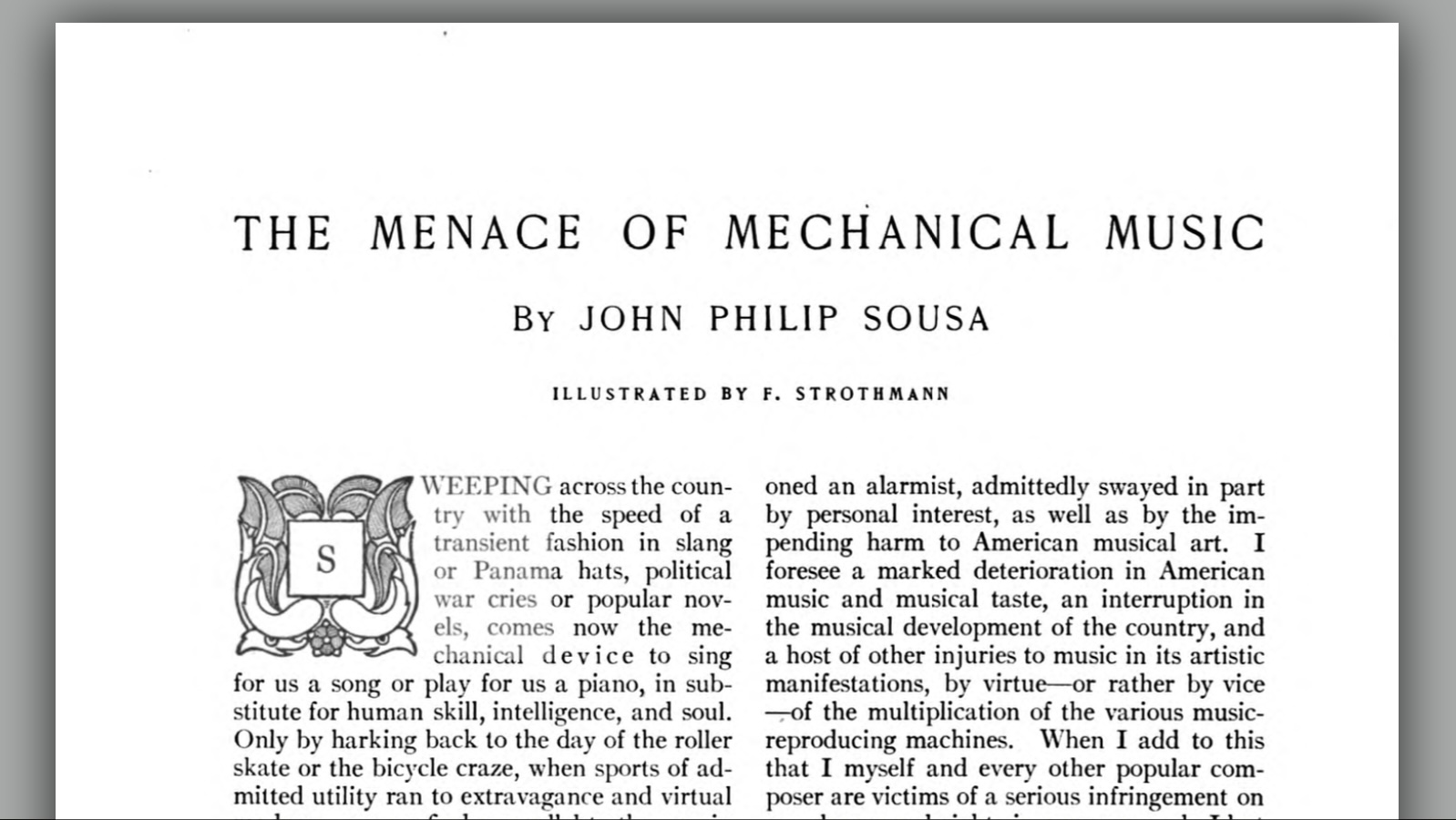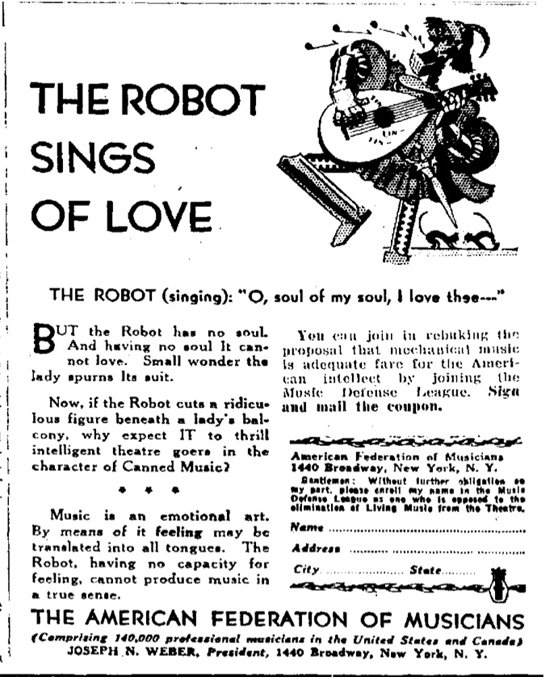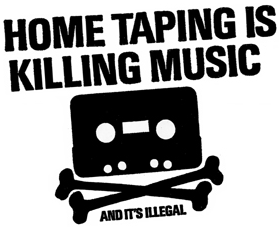The Menace of Mechanical Music: Was John Philip Sousa right?
In 1877, Edison introduced the phonograph cylinders, the first musical recording media. For the first time in history, you could listen to music without being in the same room as a performing musician. And, soon, some people hated it.
In a 1906 essay entitled The Menace of Mechanical Music, the popular composer John Philip Sousa warned “I foresee a marked deterioration in American music and musical taste, an interruption in the musical development of the country, and a host of other injuries to music in its artistic manifestations, by virtue—or rather by vice—of the multiplication of the various music-reproducing machines.” In short, he predicted, recorded music will be disastrous for music and our musical taste.
Today, it’s easy to laugh his bonkers predictions, like that mothers will turn their children into soulless machines by playing them soulless recorded music instead of singing their children to sleep. We take music recording for granted, and surely we still have pretty good taste. It’s hard to imagine wishing that records, CDs, and mp3s had never been invented. So it’s very easy to dismiss his doom-saying.
But, the more I’ve thought about it, the more I think that he had some good points.
These days, many people predict artistic doom from our new technologies, and it can be easy to dismiss these predictions, sometimes by pointing back to older predictions of doom. But it’s helpful to look back at the ways that old technological changes did change everything, both in good and bad ways. Doing so can give hints as to how best to navigate new changes.
Was John Philip Sousa right in any way, and what lessons, if any, does his example contain?

Soullessness
Sousa first argues that music must express the performer’s “soul.” “The nightingale’s song is delightful because the nightingale herself gives it forth.” Hearing music from a machine, and “reducing the expression of music to a mathematical system of megaphones, wheels, cogs, disks, cylinders,” robs music of its soul.
As someone who has spent their life listening to recorded music at home—and, often, fallen in love and feel deeply connected to musical recordings—I just think he is wrong about this. It is true that there is really something special about seeing music performed live, but recordings also create deeply meaningful experiences, and a sense of connection with the artist.
Musicians long ago began making records meant to be heard as records, whether we’re talking about music concrète, The Beatles and Pink Floyd composing with tape loops, AOR rockers, densely-composed rap albums like “Fear of a Black Planet” or “Paul’s Boutique,” or EDM musicians like DJ Shadow and Amon Tobin sampling and reconstructing bits of other recordings, and so on. Recording has enabled new kinds of music that we now cherish.
Listening to a recording is more like reading a novel, rather than listening to a storyteller read live. And, like a short story or novel, you can study a recording, and go back to it over and over, in a way that you cannot with a perfromance.
Sousa writes “I could not imagine that a performance by it would ever inspire embryotic Mendelssohns, Beethovens, Mozarts, and Wagners to the acquirement of technical skill, or to the grasp of human possibilities in the art.” In this he is utterly wrong.
So many of our current musicians talk about being inspired by recordings. In the words of one artist: “The first Velvet Underground album only sold 10,000 copies, but everyone who bought it formed a band.”
Whenever someone says that machine-made art is soulless and cannot compare to human art, they should consider whether they are basically making the same argument as Sousa’s, or the complaints that artists once made against photography, or against computer graphics, and so on.
In 1906 a famous composer warned recorded music would end lullabies and turn kids in human phonographs "without soul or expression"
— Pessimists Archive (@PessimistsArc) August 26, 2020
Hear that warning read by a voice actor below. (Via our podcast on recorded music: https://t.co/GpU9TYobzG) pic.twitter.com/6ys2goVTv2
People making music together
But, on the next point, I think Sousa was right on.
Sousa wrote “The time is coming when no one will be ready to submit himself to the ennobling discipline of learning music.” In short, he wrote that people would not learn to make music because they could just listen to recordings instead of making it themselves.
He throws out many instances of camaraderie in people making music together that, individually seemed old-fashioned and absurd when I first read it. People gathering around a campfire won’t tell stories or play music, they’ll just listen to recordings! But, taken together, I think he did have a real point.
Before recorded music, friends, families and communities often made music together. Friends and family would gather in their living rooms; the piano was the center of social life in saloons and taverns.
In contrast, when I grew up, at the center of most living rooms was a television. I never learned an instrument so I’ve never experienced it myself. I’ve only been around friends playing music on a handful of occasion, but, these occasions seemed magical. I’ve heard from several people that singing together in groups and choirs is a powerful bonding experience.
In fact, there’s good evidence that communal bonding is the evolutionary explanation for why we have music at all. Like all arts, recorded music has its own social functions, for example, fans playing music together, and trading and selling, but I’m not sure these make up for not making music ourselves.
For most of us, experiencing music is a passive activity, especially as compared to before recordings. Even for many amateurs who play instruments, social music-making remains rare. He wildly overstated it when he said “it will be simply a question of time when the amateur disappears entirely,” but I think Sousa basically had a good point here.
Copyight
And now we come to the real reason for Sousa’s article: his call for copyright protections for composers. “Composers of the music now produced so widely by the mechanical players of every sort draw no profit from it whatever. … The composer of the most popular waltz or march of the year must see it seized, reproduced at will on wax cylinder, brass disk, or strip of perforated paper, multiplied indefinitely, and sold at large profit all over the country, without a penny of remuneration to himself for the use of this original product of his brain.”
At the time, the US had no copyright law granting composers’ rights, and Sousa’s article was written as part of a campaign to create one. The campaign was successful, leading to the creation of statutory licensing for music. Every time a music recording is played publicly, whether in a dance club or in your local cafe, some amount of money must be paid to ASCAP, which in turn is paid to composers. Licensing is compulsory, meaning that you do not need to obtain permission from the composers.
This system seems to have been a successful and uncontroversial way to compensate and incentivize music composition, so, in that sense, Sousa was “right.”
Is it good or bad? What are the lessons?
Is recorded music good or bad? I, for one, could not imagine giving it up, or going back in time and trying to prevent its creation, if such a thing were possible. Yet, today, we continue to struggle with the way recording has replaced human connection—to oversimplify a bit, we’ve gone from making music together to listening to a few enormously, skilled and talented artists at home alone.
It’s hard to take Sousa’s claims of the purity of performance too seriously, since his own band sold recordings for profits. And, earlier in his careeer, he had used Gilbert and Sullivan’s music without compensating them, to which Arthur Sullivan had said, “It seems to be their opinion that a free and independent American citizen ought not to be robbed of his right of robbing somebody else.”
New music recording and distribution technologies have since led to many, many new copyright battles, including battles over cassette tapes, sampling in hip-hop, file-sharing, pop art, appropriation art, and on and on. New technologies lead to compensation battles as well: video streaming technology led to the 2023 Hollywood writers’ strikes, and compensation for musicians from online streaming remains bad.

Each of these battles are accompanied with absolute claims about art like Sousa’s: not only does the new technology ruin compensation for artists, also it’s soulless, it’s bad for art. A lot of campaigners against new technology don’t just say it’s bad for compensation, they say it’s bad, period. But I think we should separate these issues.
I could not imagine wishing that these technologies themselves did not exist. You may consider yourself lucky if you have never had to go to a neighborhood video store to see what few movies you could bring home to watch, or flipped channels on a TV to see what was on—and ended up watching reruns and commercials. Giblin and Doctorow make a compelling case that the source of current artist precarity is not, primarily, technology or copyright, but near-monopoly market conditions.
With each new technology, the loudest voices make the most extreme arguments, for why the technology has nothing but benefits, or will ruin everything. In the words of historian Melvin Kranzberg, technology is neither good, nor bad, but nor is it neutral.
We, as humans, are so bad at intuitively reasoning about the complexities of these long-term changes. But there are many common trends that occur again and again with new artistic technologies studying these kinds of examples provides a useful counter against simplistic thinking and status quo bias.

Further reading
-
The Menace of Mechanical Music by John Philip Sousa. Read it for yourself!
-
Background on Sousa and his legal battles by Patrick Warfield
-
My blog post on When Technology Changes Art
Thanks to artist Tom White for recommending the Sousa essay to me.